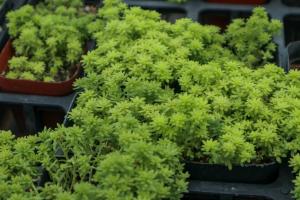How Do Plants Absorb Water?
Plants are amazing organisms that rely on a steady supply of water to survive and thrive. Without water, plants can't perform essential functions like absorbing nutrients, making food, or transporting vital minerals throughout the plant system. So, how do plants absorb water? In this article, we'll explore the fascinating process behind how plants take in water and stay hydrated.
The Role of Roots
The primary mechanism that plants use to absorb water is through their roots. Roots are specialized structures that grow into the soil, providing a large surface area that allows the plant to take in water and minerals. The root system itself is made up of several layers of cells, each with a specific function related to water uptake and transport.
The outermost layer of cells in the root system is known as the epidermis. These cells act as a barrier, protecting the inner layers of the root from damage or disease. The epidermis also has smaller structures known as root hairs, which increase the root's total surface area and facilitate water absorption.
The next layer of cells in the root system is the cortex. The cortex is responsible for storing water and minerals that the plant uses for various metabolic processes. The cortex also helps to regulate water flow and control water uptake. Beyond the cortex is the endodermis, which acts as a gatekeeper, selectively allowing certain substances to enter or leave the plant.
Osmosis and Diffusion
The physical process by which plants absorb water is osmosis. Osmosis is the movement of water molecules from an area of higher concentration to an area of lower concentration across a semi-permeable membrane. In the case of plants, the semi-permeable membrane is the plant cell wall and membrane.
Water moves into the plant through root hairs via osmosis, facilitated by a concentration gradient. The concentration gradient is created by the difference in solutes (i.e., dissolved substances) concentration between the soil water and the water in the plant roots. As a result, water molecules move from an area of high concentration (in the soil) to an area of lower concentration (in the root) through the cell walls and membranes of the root hairs.
Another physical process that helps plants absorb water is diffusion. Diffusion is the movement of solutes from an area of higher concentration to an area of lower concentration. It occurs when there is no membrane or barrier to impede the movement of solutes. Diffusion happens within the plant once the water has been taken into the root system.
The Role of Xylem and Phloem
Once absorbed, the water travels up through the stem to the leaves via a system of specialized tissues known as the xylem. The xylem is responsible for transporting water and minerals from the roots to the rest of the plant. The xylem tissue is also involved in maintaining the plant's structural integrity, and it helps to provide support and nutrients to the plant.
The phloem, on the other hand, is responsible for the transport of sugars, amino acids, and other organic compounds throughout the plant. This tissue moves resources from the leaves where they are synthesized to other parts of the plant for growth and storage.
The Importance of Water for Plants
Water is vital for plant survival, as it is involved in almost every physiological process in the plant. Water is essential for photosynthesis, the process by which plants make their own food. Without water, plants can't absorb the carbon dioxide they need for photosynthesis, and they can't produce the oxygen that they release into the atmosphere.
Water also plays a crucial role in the transport of nutrients throughout the plant. Nutrients and minerals are dissolved in water and transported through the xylem and phloem to all parts of the plant. Water helps to regulate the plant's internal temperature, allowing it to function optimally.
Conclusion
In summary, plants absorb water through their roots via osmosis and diffusion, and the water is transported throughout the plant via specialized tissues known as the xylem and phloem. Water is essential for almost every part of the plant's metabolic processes, and without it, the plant wouldn't survive. Understanding how plants absorb water can help us better understand and appreciate these incredible organisms.

 how many times do yo...
how many times do yo... how many planted tre...
how many planted tre... how many pine trees ...
how many pine trees ... how many pecan trees...
how many pecan trees... how many plants comp...
how many plants comp... how many plants can ...
how many plants can ... how many plants and ...
how many plants and ... how many pepper plan...
how many pepper plan...































